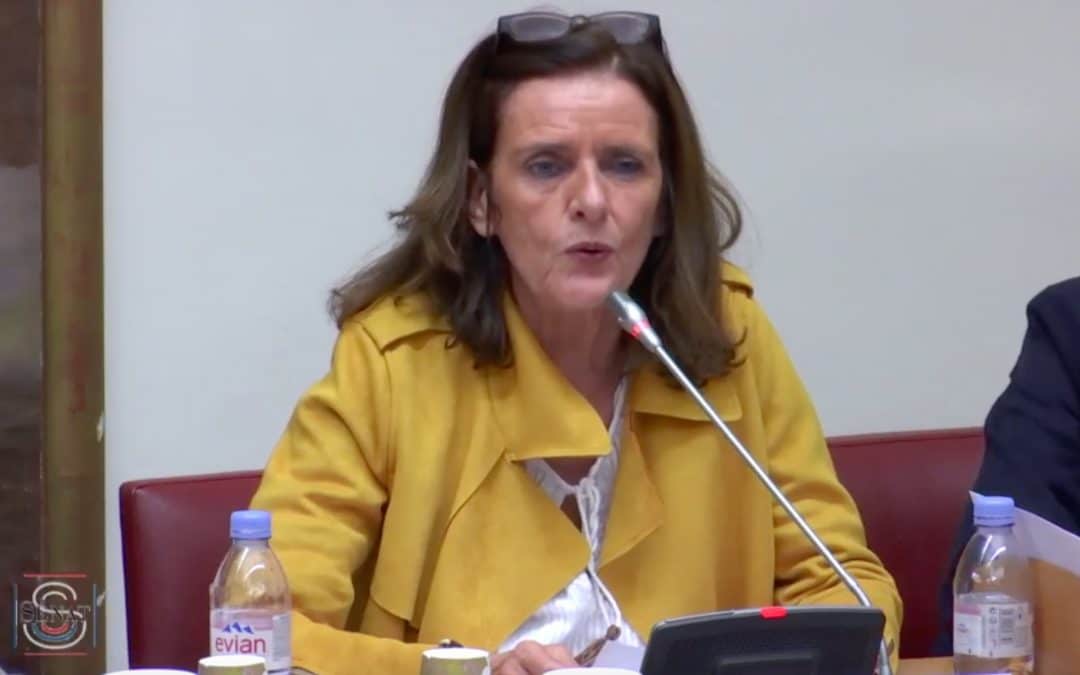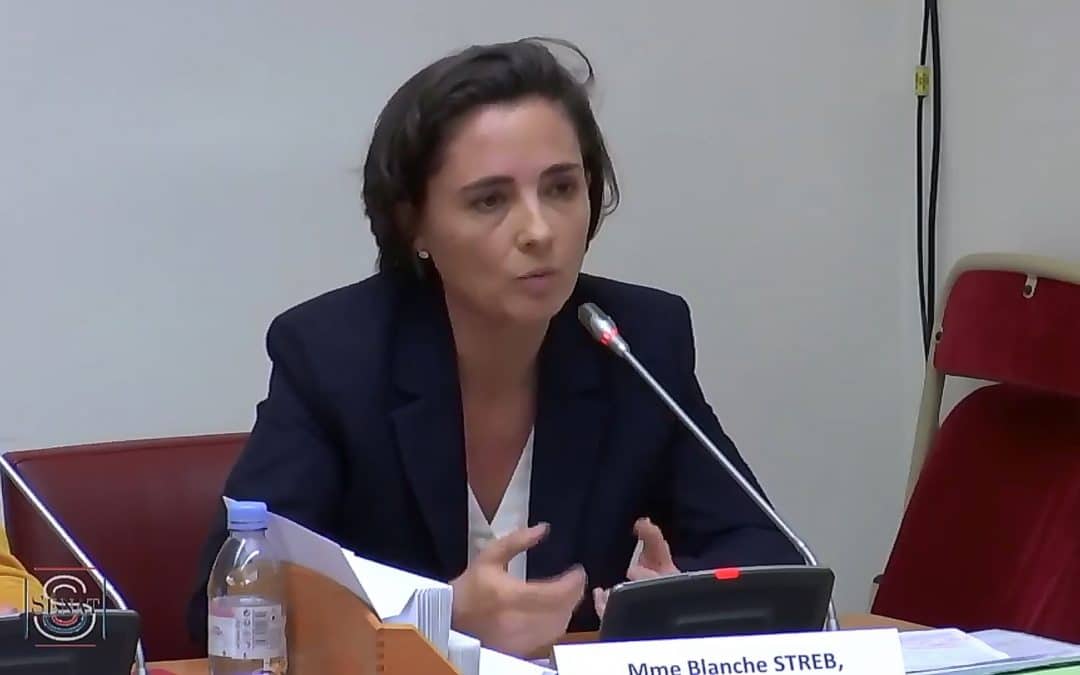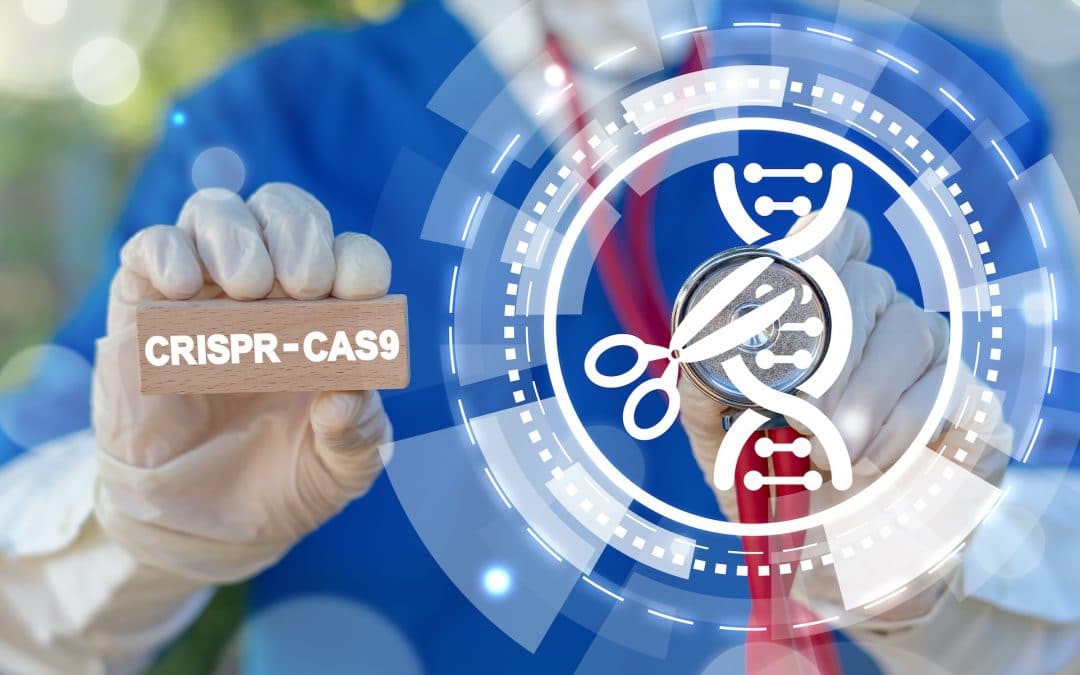
by Alliance VITA | December 16, 2019 | News, Surrogacy
In its December 12, 2019 report, the European Court of Human Rights upheld the French courts’ refusal to register the entire foreign birth certificate for a surrogacy case, mentioning the “intended mother” was an appropriate measure.
Two surrogacy cases were presented before the European judges: a couple requesting that a birth certificate for their surrogate child born in Florida in 2010 be acknowledged on the French registry, and that of a couple whose triplets were born in Ghana from surrogacy. The biological father was registered as the child’s father on the French birth certificate, but his wife is required to adopt the child. The applicants reposted that this was an “abstract, ideological, and soil-less cultural interpretation, which completely neglected the reality of the child’s best interests”.
To put things into perspective, the ECHR reiterated the fact that in France, it takes 4.1 months for a full adoption to be awarded, and 4.7 months for a simple adoption. Therefore this does not represent “an excessive burden for applicants to undertake adoption proceedings to reach this objective.” The Court concluded that this procedure did not violate Article 8 of the European Convention on Human Rights concerning a child’s privacy.

by Alliance VITA | December 6, 2019 | ART, Bioethics Law, News
Excerpts from the hearing at the French Senate, pronounced by Alliance VITA’s Assistant General Delegate, Caroline Roux, regarding the bioethics bill:
Alliance VITA was founded in France at the end of 1993 when the first bioethics laws were introduced. We are very preoccupied about any pending changes in this new law, especially concerning procreation, disabilities, and the treatment of human embryos, to ensure that the most vulnerable are acknowledged and protected.
The way bioethical laws have evolved since 1994 cries out for a genuine revaluation. Legislators have become increasingly indifferent to ethical boundaries: the dikes continue to be breached, and no one has yet bothered to assess the social and humanitarian consequences.
I would like to highlight two points:
1. ART is still an uphill battle
We cannot underestimate the burden that ART represents, both physically and psychologically, for the woman as well as the couple. In addition, keep in mind this technique is only a palliative measure and does not actually restore fertility.
Certain couples who have recourse to ART procedures have also voiced their desire to be autonomous for procreation, when possible. This should incite us to endeavor to reach this objective.
It may be rewarding to see joyful parents when a child they have longed for is finally born. However we cannot disregard the pain and suffering that some parents experience when they are confronted with difficult and often unanticipated choices, on the future fate of their supernumerary embryos.
2. Multiplying screening tests for prenatal diagnosis increases stress and anxiety during pregnancy
Whether or not a disability is proven, when a potential risk is discovered, it can spark a real upheaval for the mother and the couple, both emotionally and for the couple’s relationship.
It then becomes vitally important to have support from families and loved ones, to evaluate possible solutions, without being pressured to have a “medical” abortion. This cannot substitute for real therapeutic measures (feasible in certain cases) nor does it replace genuine ways to help parents accept and care for these children.
However, this bill is not leaning in this direction. Indeed, it marks a complete reversal to our previous laws.
This law intends to relinquish the medical infertility criterion for having access to ART. Infertile couples would thus be thoroughly neglected. This represents a real paradigm shift, which generates injustices and multiple setbacks such as:
- An escalation of ART with third-party donors: currently only 5 % of children are born by ART annually. The ART procedure is burdensome for couples, as well as for children who are now requesting that the anonymity of donors be lifted. Nevertheless, abolishing anonymity does not eliminate the injustice of a confusing and fragmented filiation for the child and may prove to be a ticking time bomb.
- It also opens the door to the procreation market in order to acquire the necessary gametes. Conversely, it should incite us to perform research to avoid this recourse as much as possible, and to especially focus on the causes of male infertility.
- Injustices for children who are intentionally deprived of their biological origins via double gamete donation, with some children being totally deprived of any paternal reference by ART with third-party donors for women without a male partner and who are not medically infertile;
- A failure for women, since there is growing pressure for medicalization of women’s bodies with oocyte freezing, with its’ unfounded and elusive promise of maternity: 3 out of 4 of these women will never give birth to a child.
- Abducting our medical practice and practitioners as well as our citizens’ health insurance funds.
On what criteria can doctors refuse ART? The legislation does not currently specify any conditions. This bill signifies an unprecedented attack on medical ethics. Do we still want to pretend that we are not paving the way towards surrogacy and surrogate mothers?
This means that legislators have to assume the responsibility of their acts, keeping in mind that the suffering or the desire of some citizens cannot be the only discernment criterion to the detriment of a child’s best interest. Legislators must not capitulate in favor of trends and pressure by the minority, but fulfill their role to serve the common social good for all.
This headlong rush is not bioethical and 3 fundamental issues are being obscured:
- The battle against infertility
- The battle against eugenics, and a genuine consideration of disabilities
- The protection of the integrity of the human species.

by Alliance VITA | December 6, 2019 | News, Bioethics Law
Excerpts from the hearing at the French Senate, pronounced by Alliance VITA’s Director of Training and Research, Blanche Streb, regarding the bioethics bill:
It is no longer rational to consider the human embryo on two separate levels: either for procreation or for research. Indeed, the same human cells are being used, destroyed, cultivated, and used for research protocols or for innovative therapy. These two visions cannot be reconciled. And they will continue to take separate directions. Why? Because what is under way is an international driving force in favor of artificial procreation and biotechnology, to bypass the infertility issues we are facing. A huge marketplace to be developed.
Genetically-modified Babies and Artificial Gametes
As you are well aware, the first genetically-modified babies have arrived at our doorstep, and not only via the controversial CRISPR technique. Many infants are born more frequently using the “3-parent IVF” technique.
In article 17 of the new bill, these techniques would now be implemented to manufacture transgenic embryos, for research purposes. Furthermore, we cannot ignore the next step. We all know that once a technique has been accepted, the next controversial permutation is already in the pipeline: to implement embryonic therapy. The other claim that goes with it is to perform research on artificial gametes (Articles 14 and 15).
The idea that lies behind these claims is that of having a baby at any cost, regardless of the expense, even if the unborn child himself must pay the toll. And this is absolutely contradictory because, at the same time, there is more and more embryonic and fetal screening. Pre-implantation diagnosis is being considered, even for non-hereditary pathologies. The debates have showed the actual pressure on this subject. Performing embryonic “quality control” goes with the misguided illusion that these techniques are a guarantee and necessary to create a child.
This mind-set is a slippery slope of rushing headlong towards allowing pre-implantation genetic diagnosis for everyone: “PGD for all” and “all for PGD”. This calls for extreme vigilance.
Behind all this, new societal standards are emerging that praise “designer” babies who have been tinkered with, instead of unconditionally accepting an infant.
Modification of guidelines for embryos
If a simple declaration is enough for using hESCs (human embryonic stem cells), human embryos would be increasingly treated as mere instruments or raw material. This eliminates the requirement to prove that no other alternative exists for using these cells. This would indirectly lead to an increased use of human embryos.
This weakens the regulatory guidelines for using embryos and hESCs, and encourages more irregularities: such as attempting to produce artificial gametes and create human-animal chimeras; some of the future possibilities anticipated by this bill. These modifications only serve one purpose: to make the administrative paperwork easier for a minority of researchers, joined together in expert think tanks to support this law.
This raises some questions. Will other researchers’ viewpoints be taken into consideration: those who also study treatment and future advances in regenerative medicine, but using different “raw materials” that do not represent an ethical issue? Have they been solicited to present their studies, their progress, and their needs?
Consequences of allowing 14-day in vitro development
At this advanced stage of development, the first signs of the central nervous system can already be detected. The implantation takes place prior to day 7. At this stage in the culture, one can retrieve various differentiated cells (such as cells from the liver or the retina). However, the message being parlayed is that cells from human beings at early stages in their lives can be used to heal other human beings.
Regarding this point as well as on others, the current bill is planning to allow it because a few countries are beginning to know how to do it. So the law should allow it “just in case”. Basically, this is what is fairly new in this bill. Several of its’ articles recommend “allowing it”, since it may prove useful, and then we’ll see later about the consequences, after the disaster strikes…
If technical feasibility governs bioethics legislation, there will be no limits. The heavy argument is foreign competition, and the potential benefits. Does competition really have its place in bioethics discussions?
Yes of course, using human embryos as raw materials will give rise to projects, potential benefits, including financial ones. Does this mean that French Bioethics should sell its soul to the highest bidder?
There are two underlying principles in this bioethics law that have been neglected: that of protecting the integrity of the human species (especially in article 17 of this bill) and that of the article 16 of the Civil Code, which states that “the law ensures the individual’s inalienability, prohibits any attack on a person’s dignity and guarantees respect for all human beings from the beginning of their life. »
Nobody denies today that embryos are human beings and that fertilization is the unique point in time and space that signals the beginning of a new human life. The human embryo cries out to vindicate his humanity, and this is corroborated in the way embryos are coveted by ART. An embryo is already the human being he will become. Whether or not there is a parental project for his future does nothing to alter his nature.
Together we must endeavor to encourage a type of scientific research, which is respectable when it serves mankind, without ever degrading human beings to the status of objects.

by Alliance VITA | December 6, 2019 | News, Surrogacy
A mother wished for her deceased son’s gametes to be sent to Israel for a post-mortem surrogacy or ART, since it is allowed in this country. However this request was declared inadmissible by the European Court of Human Rights (ECHR).
Dominique Petithory Lanzmann, the widow of the director Claude Lanzmann, filed this request to have her son’s gametes transferred to Israel. Before his death in 2017, while facing the risk of becoming sterile following the chemotherapy to treat his cancer, the 23-year old man chose to have his gametes stored in Paris at the Cochin Hospital (Egg and Sperm Bank Center for Study and Conservation). Mrs Lanzmann argued that she wanted to carry out her son’s desire to be a father. She argued that disallowing access to her son’s gametes constituted an interference in her private family life and her right to become a grandmother.
Both the hospital and the Biomedical Agency refused her request, which had previously been validated by the Administrative Court in 2018.
Upon refusal, the mother decided to file with the State Council who had also dismissed her request on the grounds that the gametes could not be sent to a different country for a procedure considered illegal in the country of origin, (as post-mortem ART is prohibited in France).
The mother then appealed to the ECHR who ratified the French court’s decision: asserting that the son had never given his consent for his mother to have a post-mortem ART to be performed, that this practice is indeed prohibited in France, and that refusing ART to a person who requests it to become a grandmother does not violate the ECHR’s Article 8 which guarantees respect for everyone regardless of “his family, his private life, his home and his correspondence”.
The judges considered that this request is incompatible with the ART current legal frame in France, which is to compensate for a couple’s medically diagnosed infertility.
We must keep in mind that the ban on post mortem ART is maintained in the Bioethics Bill currently under discussion in France.

by Alliance VITA | December 6, 2019 | News
Last November 2018, the CRISPR-Cas9 technique was first used in a human experiment which led to the birth of twin girls in China. Since then alarming information continues to spill out regarding the genetically modified babies born from this technique, who are definitely real-life guinea pigs.
The international community voiced intense outrage following this serious violation, when the scientist, He Jiankui, announced that he had crossed the red line in order to test his hypothesis of “rendering the babies resistant to HIV». He deactivated the CCR5 gene, which codes for a specific receptor used by the HIV virus to penetrate lymphocytes and infect these immune system cells.
Shortly afterwards, his apparent intentions for tinkering with human DNA were the object of fierce criticism. His underlying intention for this genetic modification was to discover how it would affect the babies’ cognitive abilities, since it is supposed that the same CCR5 gene may be involved in learning faculties.
Due to the international reprobation, the document was kept relatively secret, with scientific journals refusing to publish the study because the scientist acted in violation of professional medical rules and ethics. Nonetheless, the experiment is currently being studied by the JAMA, and has been reported to many specialists, including George Church at Harvard Medical School. On the other hand, is it really the role of scientific journals to control ethical transgressions? The World Health Organization (WHO) has been solicited to address this crucial problem. Scientific experts were recruited by the WHO to form a panel, and the idea of a hotline to report any attempts to manufacture genetically modified babies has been developed.
A journalist from MIT Technology Review got hold of the original document and passed on to a few specialists. Their 12-point conclusion is staggering and raises a number of questions, such as whether the twin’s parents gave free and informed consent, or were they kept in the dark, pressured or manipulated? Why was certain data kept secret, such as the names of the in vitro fertilization specialists and obstetricians involved? Were they fully aware of what they were doing? Needless to say, the multiple scientific biases, as well as the regulatory violations of assisted procreation, etc are severely criticized.
He Jiankui’s report had already demonstrated that these genetically modified embryos were “mosaics”. This means that in addition to the mutation targeted by the experiment, other mutations have occurred elsewhere in the genome in a different manner from one embryonic cell to another, thus making the consequences unpredictable.
These children, born as a result of reproductive tinkering, are the hostages of the manner in which they are conceived, and they will pay a high price for it. It is urgent to stop these violations, which cannot even be qualified as experimenting on human beings, but rather as experimenting on making human beings!
Allowing the manufacturing of transgenic embryos for research in the bioethics law would encourage this transgression in France. The French senators who will examine the bill in January 2020 still have an opportunity to change this.





